#microcinema
Explore tagged Tumblr posts
Text
Sept 23rd @ Cinema Subterrain - Whose Songs are Better?

Cinema Subterrain was a free monthly microcinema held in the basement of L.A. Mood Comics and Games’ Richmond Street location, which ran from 2004-2006.
17 years later, we���ve brought it back!
For those who are not familiar, Cinema Subterrain is totally free to all! Heckling, jokes and talking during the screenings are wholly encouraged! Bring your own snacks and beverages! Bring some to share! In its original run, Cinema Subterrain had a potluck / social gathering vibe - we want to keep that feeling alive with its return!
The full Fall 2023 Schedule is live!
For more info on upcoming screenings and schedule, visit:
www.tumblr.com/cinemasubterrain
Cinema Subterrain Presents: Whose Songs are Better? Jem and the Holograms vs. Barbie and the Rockers! Animated double feature!
Jem and the Holograms (1986)
VS
Barbie and the Rockers: Out of This World (1986)
And Barbie and the Sensations: Rockin’ Back to Earth (1987)
In 1986, as Hasbro Toys was about to release a new doll line; Jem and the Holograms - a group of glamorous rock star dolls, that was meant to compete with Barbie. As if like magic, Mattel released a new offset line of Barbie Dolls called Barbie and the Rockers prior to the release of Jem and the Holograms.
It’s all very suspicious, and there have been stories about how Mattel got wind of Hasbro’s plans, and rushed to beat them to market.
Whatever the case, both doll lines spawned their own animated adventures!! Jem and the Holograms ran for 3 seasons (1986-1988) for a total of 65 episodes. Jem follows the adventures of Jerrica Jones, who lives a double life as burgeoning pop Star Jem. The story follows her quest for love and fame, as she and her friends (The Holograms) battle their rivals The Misfits, a group of transgressive punk rockers!
On the Barbie and the Rockers side, two shorts were produced, released directly to VHS: Barbie and the Rockers, Out of this World (1986) and Barbie and the Sensations, Rocking Back to Earth (1987).
Tonight, we’ll begin with the first story arc of Jem and the Holograms, which is the first three episodes, released on VHS, followed by both the Barbie and the Rockers episodes!
Whose songs are better? You decide!!!!
#microcinema#cultcinema#80s cartoons#barbie#barbie and the rockers#jem and the holograms#truly outrageous#animation#fashion dolls#dolls
2 notes
·
View notes
Text
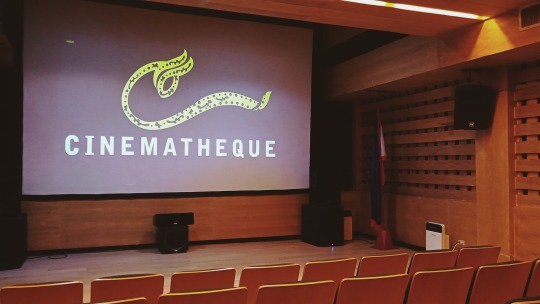
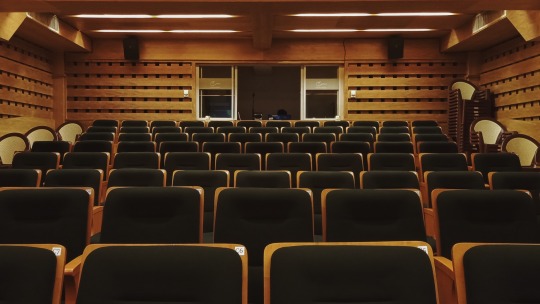

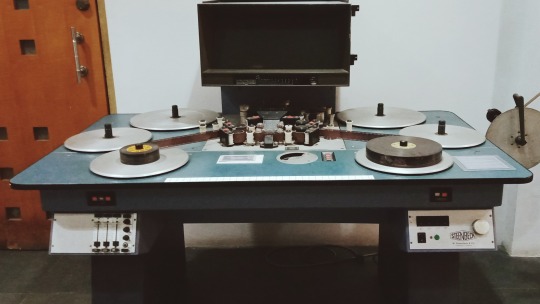
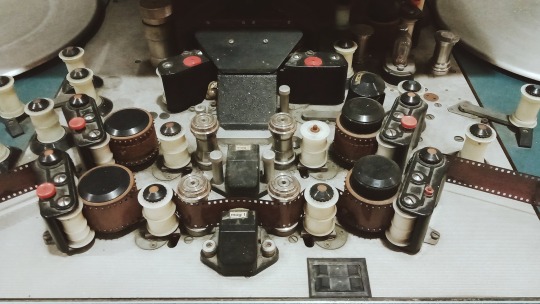
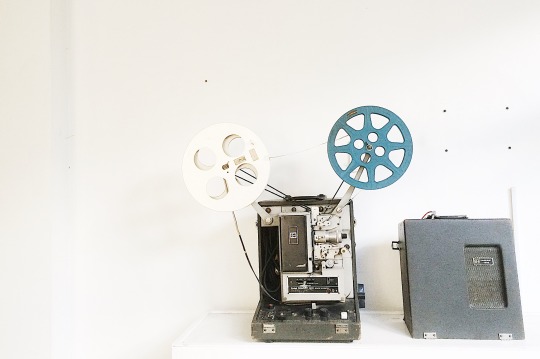


Cinematheque Manila. 🎦
0 notes
Text


I delivered this brief, eloquent speech about Possession (1981) at a microcinema last week but when i was interviewed abt it for my university’s newspaper i was like… unmm idk its a weird & confusing movie… *impodes*
3 notes
·
View notes
Text


This mural was created by Lara Nguyen in 2016 for The Refinery in Asheville, North Carolina. The local artist and teacher’s design was chosen for the building by the Asheville Area Arts Council.
From a Mountain Xpress article about the work-
Bowerbirds and butterflies decorate the building’s facade. Nguyen considers the former “the artists of the bird world.” Each year, for up to six months, the male bowerbird will spend its days building arches made of straw. He will then gather brightly colored objects and place them outside the construction in order to attract mates.
“They perform,” says Nguyen. “They use the hole [of the arch] as a stage. … They’re also great mimickers and singers. I thought that was interesting. They’re like actors, performance artists, builders, makers, collectors, [and] in some way they’re painters. They pick certain colors and situate them.”
Nguyen saw the creature as a perfect symbol for The Refinery Creator Space. She lists off the various types of artists (painters, photographers, sculptors, filmmakers, fiber artists…), in addition to the art-based organizations (Asheville Darkroom, Asheville Makers, The Bright Angle, Local Cloth and Mechanical Eye Microcinema) that now call the space their home. She views her mural, with its bright colors and visual appeal, as a way to help facilitate traffic; a way to intrigue the public to step inside and support the arts.
More recently, Nguyen contributed work to the 2023 annual ArtFields event in Lake City, South Carolina. The two pieces are from her series “Letters to My Children”.

Her statement about these works-
“Strong Arms��� & “Keep Going” are from a series entitled “Letters to My Children.” I was diagnosed with uterine leiomyosarcoma in July 2018 when my kids, Atticus and Moon, were 7 & 9 years old. In January 2020, my lung collapsed and I underwent a lobectomy. Now with a stage 4 cancer diagnosis I have found myself up at all hours worrying about dying before my kids are grown. When I couldn’t sleep, I wrote letters to them, recording their favorite recipes and my fondest memories of them for them. In 2021, I decided to share my writing with them instead of saving all this pondering in a box for later. Making and sharing this work has allowed us to cry and grieve together, which, in turn, has opened up space to truly be honest and present for one another while we are all still alive. With my children’s permission, I present slices of difficult conversations we have had to a wider audience in hopes of easing any load the viewer might be carrying on their own personal journey.
#lara nguyen#asheville murals#asheville street art#the refinery avl#ArtFields#south carolina art shows#art#asheville artist#painting#photography#mixed media#bowerbird#street art#north carolina murals#murals#public art
5 notes
·
View notes
Text
Samuel Anchia- GutterBliss (October)
This month we slowed down a lot more following the Guttercast film festival! We discussed how that was a success and started strategizing for how to improve for next year. We also have decided to start the conceptual/pre-production phases of a music video as we are getting crew together/a band to film. We are also getting ready for a really cool, microcinema projection for October 13th that is drastically different to what we have done so far. I'm excited to see more about that and overall I think the experience of the film festival was one I won't forget for a long time. i hope to work with more film festivals in the near future.
1 note
·
View note
Text
OUGI FILME DE ESTRADA
Conto: Ougi Road Movie — Mijikanamonogatari Fonte: Polaris Translations Tradução: Kiilo — Monogatari BR
000
Para comemorar minha entrada na universidade, em um certo domingo durante o período preparatório que antecedia o início do ano letivo, minha enigmática caloura chamada Ougi Oshino me convidou para sair. Eu, Koyomi Araragi, sendo um jovem simpático que aceitava qualquer convite dela sem pensar muito, decidi, só por precaução, perguntar com antecedência qual seria o nosso destino. Afinal, até eu já estava cansado das surpresas da Ougi-chan.
“Eu não ia te surpreender nem nada. Só pensei que a gente poderia ir ver um filme juntos.”
“Um filme?”
“Isso mesmo. Nosso querido Araragi-senpai pode estar vivendo uma vida bastante dramática, mas que tal admirar as histórias dos outros, só para variar?”
Entendo.
De fato, era uma sugestão bastante pertinente. Até agora, eu estava completamente focado na minha própria vida, inclusive nos exames de admissão. Mesmo quando caí no inferno, tudo o que vi foram minhas próprias retrospectivas — não que isso fosse algo ruim, mas agora que estava prestes a embarcar em um novo mundo, seria bastante irresponsável continuar pensando apenas em mim mesmo.
Ela provavelmente também queria que eu ampliasse meu campo de visão ao olhar para a grande tela de um filme — minha nossa, Ougi-chan, você realmente era a sobrinha daquele Meme Oshino.
“Tá bem, por mim tudo certo. Vou deixar você escolher o gênero. No entanto, se estiver pensando em me assustar com um filme de terror, terei que avisar que esse plano vai fracassar. Depois de ter experimentado o verdadeiro medo, não tem como eu tremer diante de um vampiro de mentira. Infelizmente.”
“Entendido, Araragi-senpai. Permita-me escoltá-lo ao teatro do medo. Ou melhor, ao cinema.”
“?”
A maneira como ela falou dava a impressão de que estava tentando exibir seu gosto através da escolha do cinema, mesmo antes de revelar o título do filme. Será que ela estava prestes a me levar a algum lugar chique, como um cinema de arte?
Para ser sincero, eu não tinha um gosto tão refinado assim... Mesmo que eu quisesse impressionar minha caloura, não tinha condições de discutir aqueles filmes independentes menores feitos por grandes diretores do passado, certo?
Afinal, eu não era a Hanekawa.
No entanto, essa preocupação era infundada.
O cinema não era um microcinema secreto conhecido por um seleto grupo de pessoas, operado em algum beco que eu nunca havia passado antes, mas sim um multiplex pertencente a uma grande empresa em um shopping — mas nossos assentos eram um pouco peculiares.
Era um assento para casais.
“Ougi-chan —”
“O que há de errado, Araragi-senpai? Depois de todo esse papo, você está ficando em dúvida? Que tolo você é — por causa de assentos como esses.”
Esses eram os únicos assentos disponíveis, disse a Ougi-chan com uma voz despreocupada — eu não pude deixar de sentir que ela não mostrava sinal algum de remorso por todos aqueles incidentes que havia causado, mas se realmente não houvesse outros lugares vazios, então não havia nada que pudéssemos fazer.
Pelo que eu podia ver, parecia que o cinema estava basicamente vazio, mas provavelmente ficaria completamente lotado em pouco tempo.
“Pode ser chamado de ‘assento para casais’, mas também pode ser usado por pais e filhos ou por amigos, você sabe. Araragi-senpai, como o modelo da racionalidade, certamente não há como você fazer nada impróprio comigo, certo? Ou você realmente tem olhado para mim de outra forma? Que surpresa, pensar que Araragi-senpai, conhecido por ser um cara tão exemplar, me trataria como uma mulher.”
Quando ela disse isso, olhando para mim com aqueles olhos escuros, foi difícil para eu contestar. Eu estava até pensando que estava sendo convencido tão facilmente, mas já era inevitável que eu pudesse ser persuadido por Ougi-chan.
Eu me sentei no assento para casais.
Embora fosse chamado de assento, na verdade parecia mais uma cama de casal — a esse ponto, não estavam praticamente nos dizendo para dormir no meio do filme?
“Senpai. Por favor, coloque seu braço para o lado.”
“Meu braço para o lado?”
Quando levantei meu braço para o lado, como me foi dito...
“E aqui vamos nós.”
A Ougi-chan se deitou com a cabeça apoiada naquele braço — em outras palavras, um travesseiro de braço.
“Hm, Ougi-chan?”
Além disso, ela tinha colocado a cabeça no meu braço. Eu tinha dito que parecia uma cama de casal, mas com quão próximos estávamos, conseguiríamos facilmente caber em uma cama de solteiro também.
“Ha ha. Eu posso ter tramado muitas coisas sozinha, mas talvez tudo o que eu realmente quisesse era ser mimada por você, senpai.”
“Isso não é verdade.”
“Ano que vem, acho que vou ter que ser mimada assim pela Kanbaru-senpai em vez disso.”
“Não cause problemas para a Kanbaru. Faça isso só comigo.”
No entanto... Eu já conhecia assentos de luxo, mas acho que realmente existem muitos tipos diferentes de cinemas. Assentos para casais e camas... Não havia também algo como exibições explosivas?[1]
“Sim. Também existem exibições animadas, assim como exibições musicais, que permitem que você cante junto com os personagens... Estamos em uma era com uma variedade de formas de assistir a filmes.” [2]
“Agora que você mencionou isso, eu realmente gostaria de experimentar uma coisa: assistir a um filme ao ar livre. Em um parque ou algo assim. Às vezes, você vê isso em dramas estrangeiros... É como se estivessem em um piquenique, com um tapete estendido.”
“Se fosse um drama estrangeiro, eles não estariam sentados em tapetes de palha.”
“Além disso, seria ir um outdoor também. Eu gostaria de ir assistir a um filme de dentro de um carro. E poderia ouvir o áudio sintonizando no rádio do seu carro... Acho que eram chamados de cinema drive-in?”
“Isso parece legal. Quando você for, por favor, me deixe ir no banco do carona. Dentro do carro, vamos conseguir assistir enquanto conversamos, certo?”
Para a Ougi-chan, que era uma garota bastante tagarela, um cinema onde você tinha que passar cerca de duas horas sem dizer uma palavra poderia ser um espaço desconfortável — mas, de uma forma ou de outra, era verdade que ela havia planejado tudo isso para o meu bem.
Que doce da parte dela.
“É algo que eu definitivamente gostaria de experimentar no futuro, assim que eu aprender a dirigir, mas ainda realizam esse tipo de exibição em algum lugar do Japão?”
Eu o descrevi como algo para “experimentar”, como se fosse normal, mas talvez no passado, os filmes realmente eram algo para “viver”, em vez de algo para “apreciar”.
“Isso é verdade mesmo agora, não é? Tem 3D, IMAX, 4DX... Até casos em que os atores sobem ao palco para cumprimentar o público. Bom, vivemos em um mundo onde você pode maratonar uma temporada inteira do drama mais recente, tudo no seu smartphone. Chegaremos ao ponto em que só vamos ao cinema para aproveitar os encantos únicos do cinema.”
“Se vamos aproveitar algo, talvez devêssemos ter comprado um pouco de pipoca e refrigerante.”
“Ah, você vai ter que tomar cuidado para não fazer barulho enquanto come ou bebe, ou as pessoas vão desaprovar.”
“Eu sinto que as pessoas vão desaprovar a forma como estamos agora — mas suponho que até a etiqueta está mudando. Existe uma regra que diz para não ligar o smartphone enquanto os créditos estão passando, mas não havia essa regra na época em que os smartphones nem existiam.”
“Não é por isso que as pessoas vão ao cinema, para escapar um pouco do celular?”
Eu não tinha certeza sobre isso. Eu sentia que eventualmente haveria exibições de filmes que permitiriam o uso livre do celular, ou algo assim. Para pesquisar o significado de uma palavra usada no filme ou para compartilhar seus pensamentos com os outros espectadores em tempo real. Não havia algo como o teatro Noh ou kabuki que permitisse acompanhar enquanto se ouvia comentários em um dispositivo?
“As regras de etiqueta também têm suas diferenças regionais. No exterior, há a prática de dar uma grande salva de palmas assim que os créditos começam a rolar. Aparentemente, eles têm reações barulhentas em resposta a boas cenas.”
“Acho que isso seria uma sensação semelhante a assistir a uma peça de teatro? No Japão, parece difícil até rir de uma piada em um cinema.”
Como estávamos falando sobre etiqueta e sobre diferentes culturas, eu precisava ter muito cuidado, ou poderia acabar dizendo algo incrivelmente rude acidentalmente.
E isso não se limitava apenas a filmes.
Eu não sabia o que era correto e o que era a coisa certa a fazer, e não sabia o que precisava priorizar e o que precisava evitar errar — e para mim, que estava prestes a partir para aquele novo mundo, talvez essa fosse uma data de despedida adequada.
“Olhe. O filme está prestes a começar. Por favor, fecha boca.”
A garota tagarela sussurrou isso em meu ouvido — e ao mesmo tempo, até as luzes de emergência se apagaram, mergulhando o cinema na completa escuridão. Durante o resto da exibição, Ougi-chan permaneceu em estrita conformidade com as regras de etiqueta, e como havia quase nenhum peso em meu braço, era quase como se eu tivesse ido ao cinema sozinho.
Ela havia se tornado bastante boa em seguir as regras.
Talvez ela realmente quisesse apenas assistir a um filme — mas quanto aos seus pensamentos mais profundos, ocultos na escuridão como se estivessem embrulhados em um cobertor, eu não tinha como conhecê-los.
A única que os conhecia era a própria Ougi-chan.
[1] 爆音上映 (bakuon jouei) significa “exibição com som explosivo”. Aparentemente, é uma forma experimental de exibição de filmes que utiliza um sistema de áudio geralmente usado para concertos ao vivo, proporcionando um som mais alto e dinâmico. Parece que essa prática se originou no Japão e não possui um termo equivalente em inglês. [2] 応援上映 (ouen jouei) significa “exibição animada”. É outro tipo de exibição de filmes que se originou no Japão, incentivando a participação do público por meio de aplausos e outras reações em relação ao filme.
0 notes
Text
Alternative Distribution Channels: Beyond Film Festivals

Film festivals have long been a cornerstone for independent cinema and niche films, offering a platform for exposure, critical acclaim, and potential film distribution deals. But now, the landscape of film distribution is undergoing a significant revolution. With the rise of digital platforms and evolving film audience preferences, filmmakers are increasingly exploring alternative channels to bypass the traditional film festival circuit and connect directly with their film audiences. This film distribution blog will delve into some of the most promising alternative film distribution channel, highlighting their advantages and considerations for filmmakers.
Streaming Services:
The emergence of film streaming giants like Netflix, Amazon Prime Video, and Hulu has revolutionized film distribution. These platforms offer filmmakers a vast film audience reach, bypassing geographical limitations. Additionally, revenue models like subscription-based viewing or pay-per-view allow for direct financial gain.
However, reaching these giants might be a daunting task. Film streaming platforms like Canvas, Vimeo etc has stands as a life saver for the indie filmmakers. Filmmakers need to present high-quality films with strong film audience appeal to stand out.
Video-on-Demand (VOD) Platforms:
VOD platforms like Canvas-On-Demand, Vimeo On Demand and iTunes offer filmmakers more control over pricing and film distribution compared to major film streamers. They cater to niche film audiences and can be particularly effective for genre-specific films or documentary cinemas. While viewership might be lower than on major platforms, filmmakers retain a larger share of the profits.
Self-Distribution:
Self-distribution empowers filmmakers to have complete control over their film's distribution strategy. Platforms like Tugg and Distrify allow filmmakers to host theatrical film screenings, manage digital sales and rentals, and build a direct relationship with their film audience. However, self-distribution demands a strong film marketing and effort for film promotion to reach target film audiences.
Microcinemas and Alternative Venues:
Microcinemas and alternative venues like art galleries, museums, and community centres offer a unique platform for independent films. These film screenings cultivate a more intimate and interactive experience for the film audience, fostering a sense of film community and cultural exchange. Filmmakers have the freedom to leverage these venues to build a loyal local film audience and generate buzz around their films.
Online Film Communities and Crowdfunding:
Online platforms dedicated to showcasing independent films, like WFCN, Short of the Week and Film Shortage, provides valuable exposure and builds anticipation for a film's release. Crowdfunding platforms like Kickstarter and Indiegogo allow filmmakers to raise funds for film production and film distribution while simultaneously engaging and building a pre-release film audience.
The digital age has empowered filmmakers to explore alternative film distribution channels beyond film festivals. By strategically utilizing film streaming services, VOD platforms, self-distribution strategies, and innovative film screening venues, filmmakers are able to connect with their target film audiences, build film communities, and achieve financial success. Choosing the right film distribution channel depends on the film's genre, budget, and target film audience. A strategic combination of these alternatives will offer any filmmaker greater control, flexibility, and a wider reach for their cinema.
#film#filmmaking#film industry#filmmakers#film marketing#film distribution#indie filmmaking#film festival
0 notes
Text
ArtsACT Kambah Turns 50 - application for Arts Activities funding - Feb 2024, Louise Curham support material
Images: maximum ten images (note, several were uploaded with the application)
Video files: maximum three files, and not more than six minutes in total (none included in the application)
Here's a link to my CV.
Some projects from the past two years ...
curating the Antics Hair Microcinema in Canberra with screenings featuring interstate and international work
Canberra Art Biennial 2022 - short film performances
Kambah at Tuggeranong Arts Centre, Jan Feb 2023
Compost Film with B Turner and UK Fredericks at Belconnen Arts Centre in the University of Canberra group show
Images:
In the exhibition Kambah, I used pinhole photography and cyanotypes as a way to investigate the visual experience of Kambah. I photographed everyday scenes. The intention in using old media was to represent things we in Kambah see every day using a process that makes them look different, to encourage residents to think more about these places and what they mean to them.
The following two images were exhibited in 'Kambah' Jan/Feb 2023 at Tuggeranong Arts Centre. Both are produced using Harman direct positive paper in a homemade pinhole camera, built during the Covid pandemic lockdowns.
This image is one of the cyanotypes:
The Kambah exhibition, an installation shot, left to right: Paul Collis poem (commissioned for the exhibition), pinhole camera on plinth, 7 enlargements of pinhole images of Kambah, sitting circle for conversations with visitors and community members, Bennet family 16mm home movie provided by the NFSA, pinhole originals (5x4 inch, clusters of 6-9 images), cyanotypes of plants of Kambah (5 x4 inch, cluster of 9 images).
Media related to the exhibition:
Brian Rope in the Canberra Times 10 Feb 2023
Living Arts Canberra blog, 28 Jan 2023, audio interview
ArtSound FM interview, ABC Canberra Sunday morning interview, Feb 2023.
Reflective article related to the exhibition, ABC Canberra Sunday morning 17 Dec 2023 related to this article.
The purpose of this exhibition was to work towards the 50th anniversary of the suburb Kambah in 2024. It was also to develop entries for the Kambah Peoples Map, in development by me since 2020. The map uses a locative media tool developed by artists in Belgium and Spain. it allows a curated map primarily for use on a mobile phone while in a set location, here's a link to the work-in-progress map.
Here's a screenshot:
Other key work of mine
Since the early 2000s, a strand of my practice focuses on re-enacting 1970s media art in the artist/archivist collaboration with Lucas Ihlein under our nom de plume, Teaching and Learning Cinema (T:LC). In this image Lucas is setting up for Horror Film 1, a work by British artist Malcolm Le Grice from 1971. TLC carries out this re-enactment process as a way to learn about the work which we then document in instruction manuals, or 'user's manuals' as we call them.
Using old media to produce works on paper:
Here's a still from the project from 2008 Waiting to Turn into Puzzles. This image formed part of a musical score prepared in collaboration with composer David Young.
Here's an image from my 2015 solo exhibition at PhotoAccess in Canberra, A Film of One's Own [Archive Fever].
This is an AO sized work (larger than a metre) made from scanning an entire short 16mm handmade film:
My film work using old media, 16mm and super 8, is known and used by Australia's experimental music community. The films must be performed live, so they have some presence in the experimental film community, but that is limited due to that requirement for liveness.
Here's an example:
And one more:
0 notes
Text
#FollowFriday Five: Ybor Arts Part 1
As seen in last night's Ybor City Arts tour, Ybor's art scene is fired up. So don't wait for Ybor City art events to show up in the papers. Follow these folks on Instagram, and be the first to know about Ybor City art events throughout the year:
Hotel Haya @hotelhaya
From workshops and dance classes to rotating art, Hotel Haya is one of the most artful hotels in town. Follow them on Instagram @hotelhaya so you don't miss out on cool events like the Halloween Spooky Blooms workshop hosted by The Roaming Petal on Oct. 26, 6:30-8:30 p.m.
Marcolina's Fine Arts Gallery @choosemarcolinas
Marcolina's Fine Arts Gallery, known for its Monday night art classes, joined Ybor City's art scene in early 2023, and they're already hosting a steady stream of group art shows, workshops and events throughout the year. Follow them @choosemarcolinas to stay in the know.
instagram
The Bricks @thebricksybor
The Bricks is known for its food and drinks, but local artist Michelle Sawyer routinely fills their adjacent events space with art like this month's prints. Follow them @thebricksybor to find out what's next.
instagram
HCC Ybor @hccfl_artgalleries
Hillsborough Community College has a relatively long history of showing fantastic locally-made contemporary art in Ybor City. It's a small college gallery, so check the hours before you drive over, but a trip to HCC's Ybor City Gallery is typically both inspiring and free. Follow them on @hccfl_artgalleries, and you won't miss a single exhibition.
instagram
Screen Door: An Ybor City Microcinema @screendoor.ybor
Ybor City microcinema, Screen Door, screens an eclectic mix of classic, cult, and indie films. Find out what they're screening next @screendoor.ybor on Instagram.
Come back next Friday for Part 2, where I'll share five more Ybor City arts leaders to follow.
0 notes
Text
March 23rd - Comic Book Documentaries!!!

Cinema Subterrain Returns for its Spring 2024 screening programme! There will be screenings in March, April and May (more info tba!)
Cinema Subterrain Presents: An Evening of Comic Book Documentaries.
La Mood Comics and Games has graciously hosted Cinema Subterrain since its inception in 2004. To celebrate the medium that built their business, tonight we will be featuring two documentaries on the medium on Comic Books!!!
Comic Book Confidential (1988, dir: Ron Mann).
Ron Mann's Documentary traces the origins of the medium of comics from its inception, through it's moral panics and growing pains; tracing it's growth to being regarded as a legitimate artistic medium. Featuring interviews with comic creators, the film focuses heavily on the emergence of the underground comix scene and the maturing of the medium into a discreet artform. Featuring interviews with Stan Lee, Robert Crumb, Linda Barry, Frank Miller, William Gaines, and more. This is one of the best and definitive documentaries on comics!
She Makes Comics (2014, dir: Marissa Stotter)
This documentary focuses on the crucial role that women have played in the comic book industry since the early 1900s. Much like Mann's film, the film traces the origins of the medium, but with an emphasis on the contributions made by women within comics, from the nacent industry of the 1930s, through the underground comix scene of the 1970s, to the present day.
#microcinema#comics#comicbookhistory#comic books#comic art#documentary#documentaries#film#cultcinema#movies
0 notes
Text

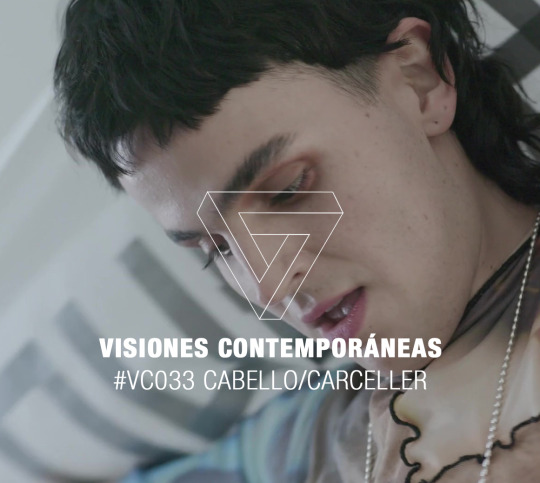
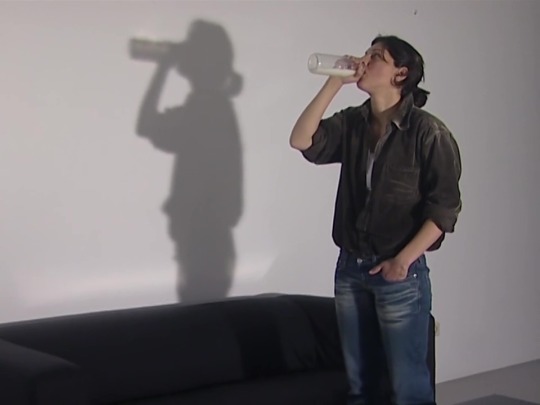
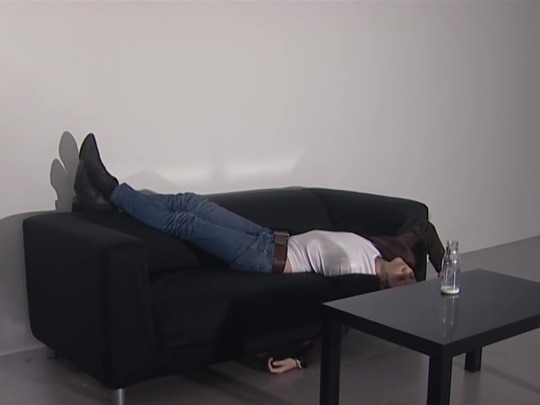
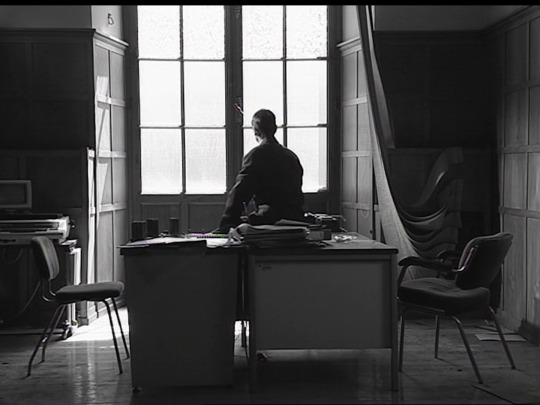
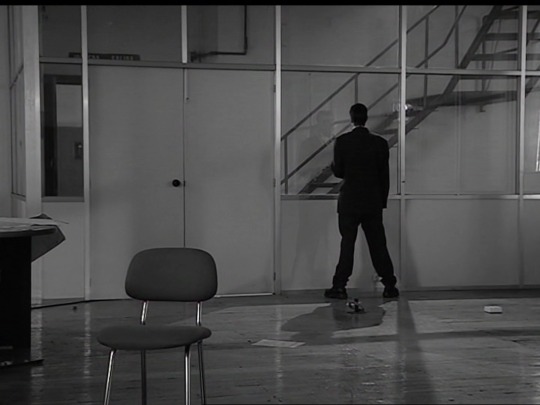
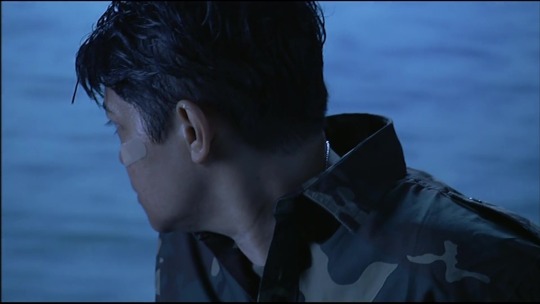
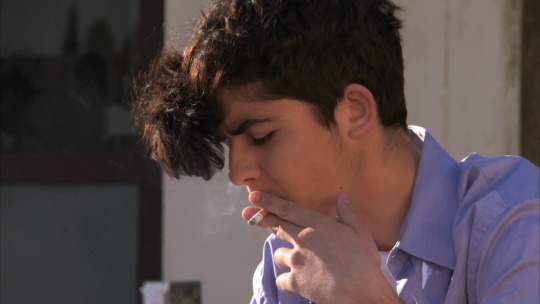
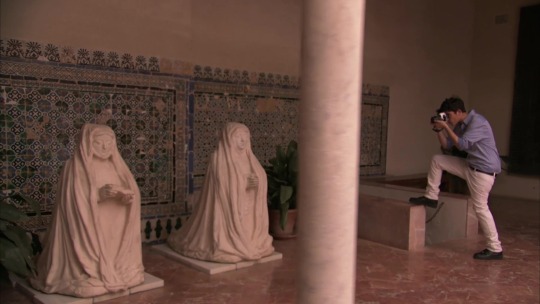
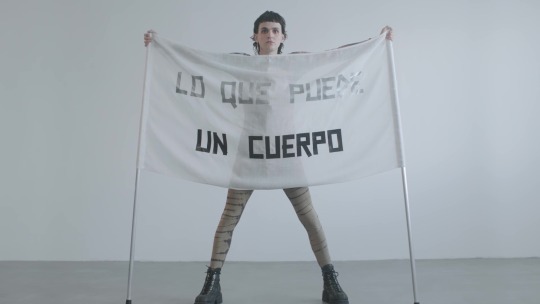
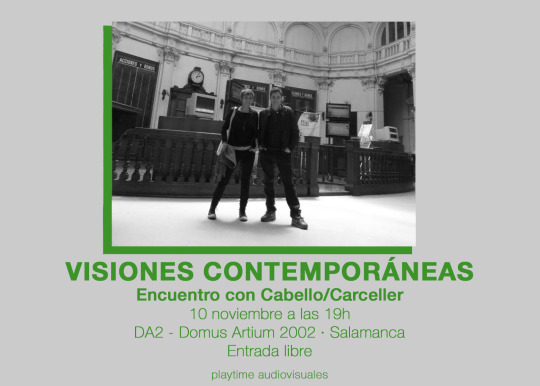
Del 10 de noviembre de 2023 a febrero del 2024
VC#033 CABELLO/CARCELLER
Cabello/Carceller, parten de la instalación, la performance, el vídeo, la escritura y el dibujo para cuestionar los modos hegemónicos de representación en las prácticas visuales y ofrecer alternativas críticas. La construcción social de la identidad y las políticas sexuales y de género atraviesan toda su trayectoria. Sus proyectos son de carácter colaborativo, incorporando así voces minorizadas.
Trabajan conjuntamente desde el año 1992. Entre sus exposiciones individuales destacan las realizadas en el Centro Andaluz de Arte Contemporáneo de Sevilla, Matadero-Madrid, en el Centro Cultural de España en Buenos Aires, IVAM de Valencia, en el Centro de Arte Dos de Mayo de Móstoles, Azkuna-Zentroa de Bilbao y en el Museo Universitario de Arte Contemporáneo de Ciudad de México.
Asimismo, han llevado a cabo comisariado de exposiciones y son autoras de varias publicaciones. Su obra se encuentra en colecciones como el Museo Nacional Centro de Arte Reina Sofía de Madrid, la Fundación La Caixa de Barcelona o el MACBA de Barcelona. Están representadas por las galerías Elba Benítez de Madrid y Joan Prats de Barcelona. En 2015 representaron al pabellón español de la Bienal de Venecia convirtiéndose en referente dentro de las prácticas artísticas contemporáneas a nivel internacional. Este año participan en la 35 Bienal de São Paulo.
OBRAS
MicroCinema: Actos 1—3. Casting: James Dean (Rebelde sin causa). Sonido. Color. Vídeo DV (4:3) 2004. 32’50’’ Ejercicios de poder. Casos: Liam Neeson (La lista de Schindler). Fred MacMurray, Jack Lemmon (El Apartamento). Sonido. B/N. Vídeo DV (4:3) 2005. 8’15’’ After Apocalypse Now: Martin Sheen (The Soldier). Sonido. Color. Vídeo DV (16:9) 2006-7. 9’54’’
A/O (Caso Céspedes). Sonido. Color. Digital. 2009-10. 14.39’’
Movimientos para una manifestación en solitario. Sin Sonido. Color. Digital. 2021. 6’
El 10 de noviembre con motivo de la inauguración del Visiones Contemporáneas dedicado a Cabello/Carceller, habrá un encuentro con les artistes a las 19h en La Cocina del DA2, con entrada libre.
1 note
·
View note
Text
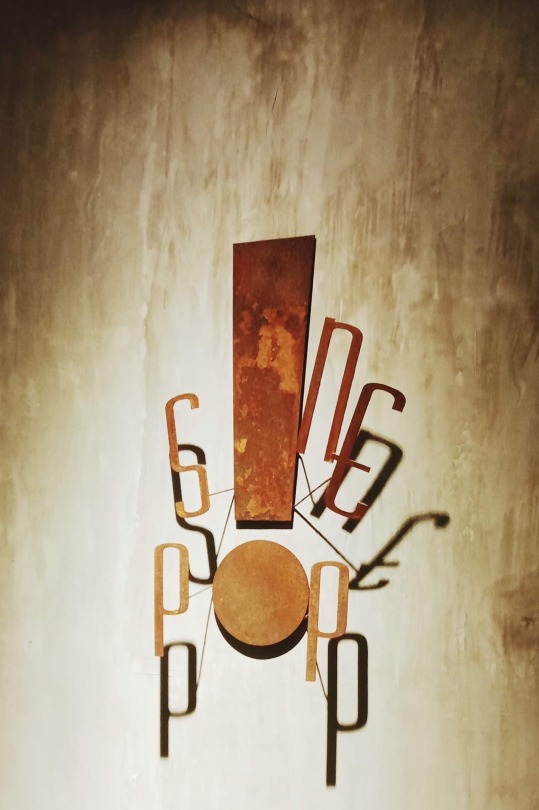
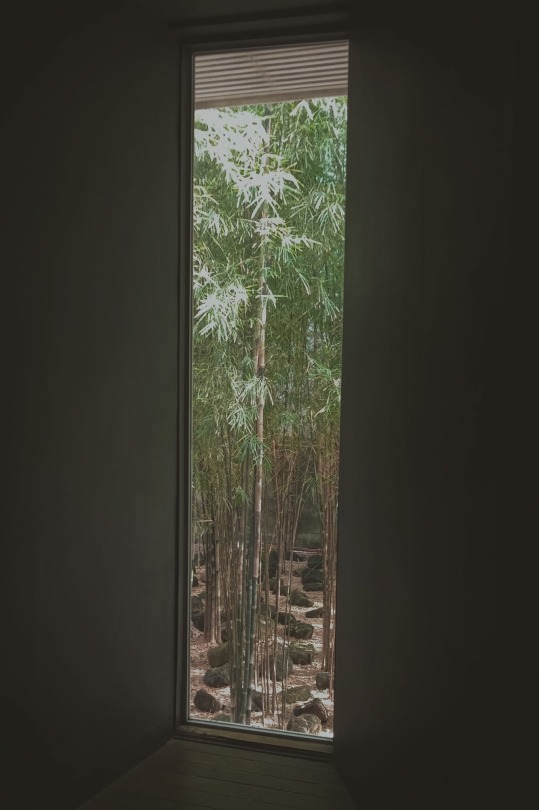



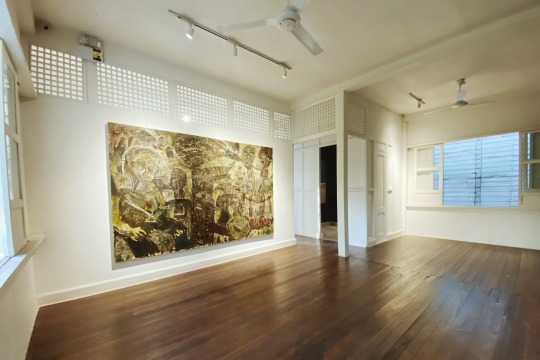


Sine Pop Saint Mary St., Quezon City. 🎥
#sinepop #cinemaseries #microcinema #film #cinemahouse
2 notes
·
View notes
Text
WEEK 2 Workshop Reflection
Microcinema and Vertical Cinema
In today's workshop, we were introduced to microcinema and vertical cinema. Vertical cinema refers to creating films specifically for vertical viewing on smartphones or other vertical-oriented screens, rather than the traditional horizontal aspect ratio suited for movie theatres and TVs. Over the few decades, vertical cinema has sparked a significant amount of controversy and debate within the film industry.
Critics argue that vertical cinema challenges the established norms and techniques of traditional filmmaking. The horizontal aspect ratio is argued to offer a more immersive and cinematic experience, allowing for wider shots that capture more detail and context. Vertical cinema's narrow field of view might limit the depth and scope of visual storytelling.
However, to my mind, vertical cinema might lower the entry barrier for aspiring filmmakers. It allows for a more accessible and inclusive filmmaking landscape, where individuals with smartphones can participate in the creative process without the need for elaborate equipment. Just as widescreen and 3D formats challenged traditional cinematic practices in the past, vertical cinema pushes filmmakers to experiment with new techniques and reimagine the possibilities of visual storytelling.
0 notes
Text
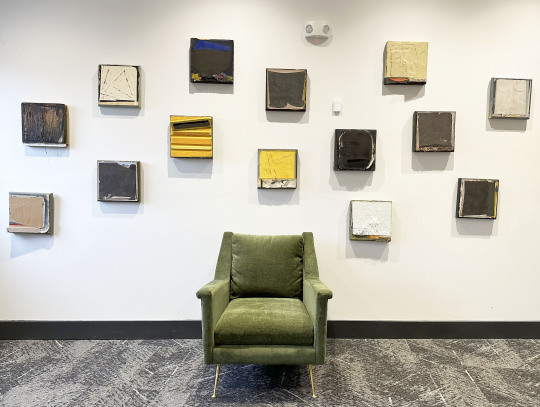
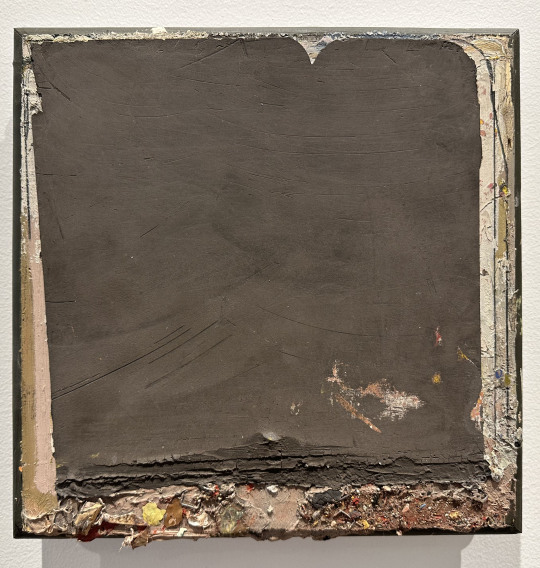
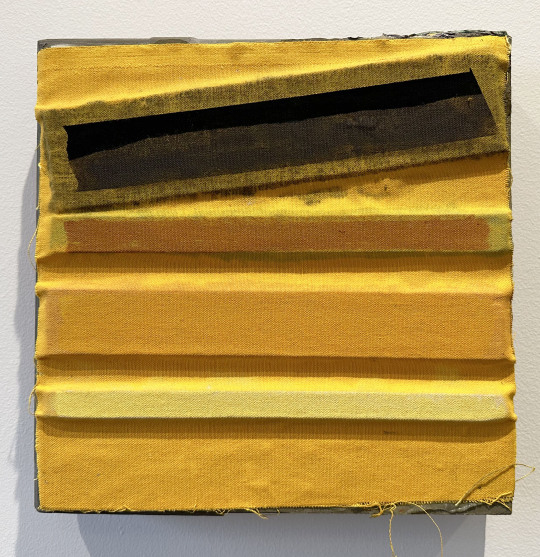

The Ybor City Arts Tour was last week and was a great way to check out the many spaces currently in the Ybor City area. The Kress Contemporary building with its multiple galleries, artist studios, performance space (The Fringe Theatre), and microcinema, was definitely a highlight.
The above images are of sculptural work by Edgar Sanchez Cumbas (he was also in the Department of Contemporary Art group show in the same building). It is just one of the rotating works you can find while walking around the space.
Below are some selections from the event.

Kim Radatz opened her space, currently showing an installation focused on the “C” word.
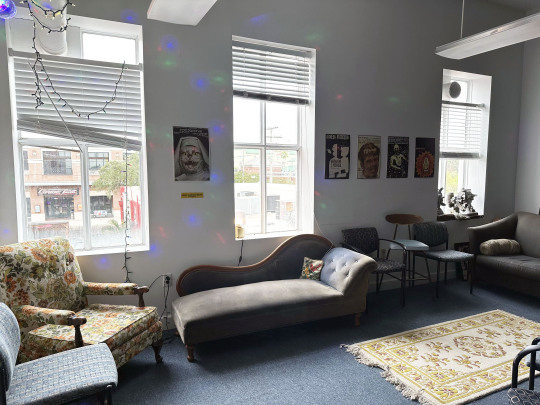
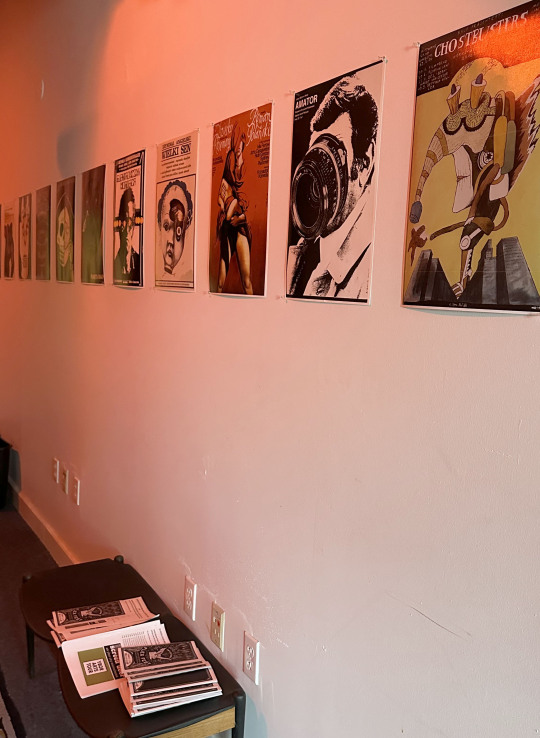
Screen Door: An Ybor City Microcinema is always showing interesting films from a variety of genres. Pictured are the seating area and the movie posters lining the hallway outside of the film viewing area. For the art tour they were showing past Flex Fest short films.
On the third floor are a large group of artist studios with several walls hanging work by many of the artists.

Work by Jon Pannier
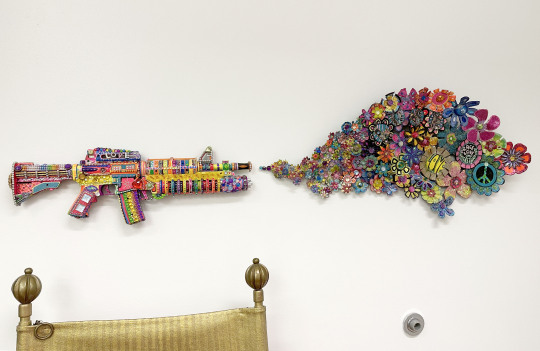
Sculpture by Eileen Goldenberg
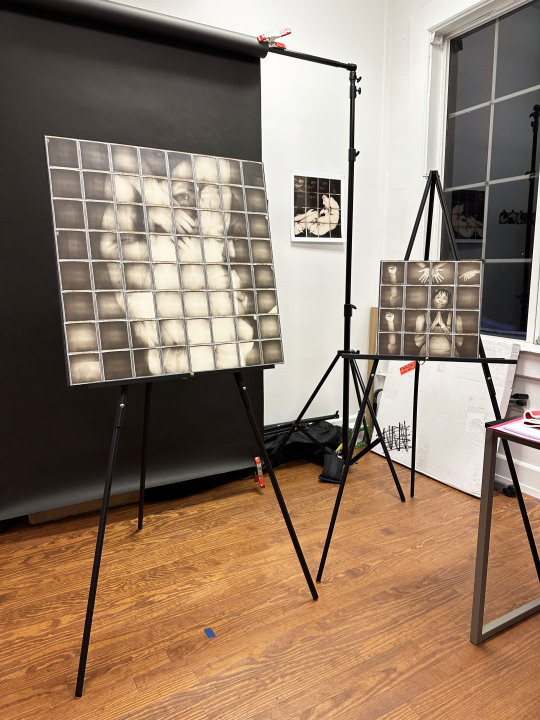
Polaroid work by Brian Pannier
Lots of great work by the three very different artists that make up the Y3K Collective- Jon Pannier, Eileen Goldenberg, and Brian Pannier, seen above.

Work by Juan Espinosa (left) and Ashley Cantero (right) of Dluance

Inside Dluance
Creative space Dluance is run by visual artist Ashley Cantero and music producer/ graphic designer Juan Espinosa.

Paintings by Marilyn Binder Silverman

The work above is from the painters Marilyn Binder Silverman and Elizabeth Fontaine-Barr who share their studio space.

Painting by Karol Batansky
Self taught painter Karol Batansky just moved in to her new studio from the Ybor Art Colony which is closed while currently being renovated.

Mixed media artist Chase Parker makes a variety of work, including the unique sculptures pictured above.

Ron Watson creates highly detailed drawings at his Shades of Gray Studio.
Below is one of the common spaces filled with work by a selection of artists. It’s always worth a trip up from the 2nd floor galleries even if most of the artists are not in their studios to see what’s new.


Work by Jenal Dolson (left) and Michael Jones (collage, right)
The next post will focus on three spaces outside of Kress Contemporary that were also part of the tour.
#Ybor Arts Tour#Kress Contemporary#Artist Studios#Ybor City Art Shows#Screen Door#Brian Pannier#Chase Parker#Cinema#Collage#Drawing#Edgar Sanchez Cumbas#Eileen Goldenberg#Elizabeth Fontaine-Barr#Film#Flex Fest#Florida Art#Florida Artists#Graphic Design#Illustration#Jenal Dolson#Juan Espinosa#Karol Batansky#Ashley Cantero#Kim Radatz#Kress Building#Kress Building Galleries#Marilyn Binder Silverman#Michael Jones#Microcinema#Mixed Media
1 note
·
View note
Text
Open a combination microcinema and coffee shop, start a film restoration company, do more squats, take really nice naps while the suns out, start a substack for long form film writing,
Retiring would be so good I would have so much more time and energy, do more volunteering, watch unlimited movies per day, learn how to garden, learn how to sew, learn Vietnamese but like for real, get a masters degree,
30 notes
·
View notes








